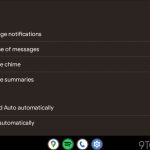Eurozone retail sales rose 0.1% in July, following a decline in June. The euro gained to 1.11 against the dollar, boosted by speculation of a rate cut by the US Federal Reserve ahead of Friday’s jobs report.
The retail sales Retail sales in the eurozone rose by a modest 0.1% in July 2024, recovering from a 0.4% decline in June, according to data published by Eurostat on Thursday. This modest increase is in line with economists’ forecasts and reflects the slow recovery in the region. Across the European Union, retail sales increased by 0.2% in July, also reversing the 0.4% decline of the previous month.
On a year-on-year basis, the retail sales index fell by 0.1% in the euro area, highlighting the persistent issues consumer spending across the currency bloc. In contrast, the European Union recorded an annual increase of 0.4% in retail trade volumes.
Sectoral breakdown and situation in the Member States
As regards sectoral results, in July there were mixed results across the different categories in the Eurozone. sales of food, beverages and tobacco increased by 0.4%, while the non-food productsexcluding automotive fuel, registered an increase of 0.1%. However, sales of fuel automotive sales in specialist retailers fell by 1.0%.
Across the European Union, there were similar trends: Sales of food, beverages and tobacco rose by 0.5%, sales of non-food products (excluding motor fuel) rose by 0.2% and sales of motor fuel fell by 1.4% in specialist retailers.
Among the Member States for which data were available, Croatia recorded the highest monthly growth of the volume of retail trade, with an increase of 2.9%. It was followed by Austria and Slovakia, both with growth of 1.8%, and Slovenia, with an increase of 1.6%. At the other end of the spectrum, Luxembourg experienced the sharpest decline, with a fall of 2.1%, followed by Romania (-1.8%) and Cyprus (-1.1%).
Market reactions
The euro held firm at 1.11 against the dollar US, up 0.2% on Thursday, reaching levels last seen in late August. This strengthening The single currency’s rally came as traders raised bets on a rate cut by the Federal Reserve, with market attention focused on the upcoming US jobs report due on Friday.
The have been intensified speculations about the magnitude of the possible rate cut. According to the CME’s ‘FedWatch’ tool (a US financial markets company), the probability of a cut of 50 basis points at the Federal Reserve’s September 18 meeting is now 41%, up from 34% the previous week.
Friday’s US employment data is seen as pivotal, with weaker-than-expected job growth and a fresh rising unemployment rate compared to July could fuel expectations of further rate cuts.
In the fixed income marketsEuropean sovereign debt yields remained relatively stable. The German 10-year Bund yield remained stable at 2.22%, while the spread between Italian BTPs and Bunds narrowed by 3 basis points to 1.37 percentage points. Meanwhile, the spread between Spanish bonds and Bunds remained unchanged at 0.82 percentage points.
The equity markets Europeans recorded a behavior moderate following Wednesday’s selling. The Euro Stoxx 50 index was down 0.2% at 11.15 CET. French and Dutch stocks posted slight losses, while Italy and Germany posted marginal gains. Spain’s Ibex-35 index outperformed its peers and rose 0.5% thanks to gains in its banking sector.
Among large-cap stocks, Dutch semiconductor equipment maker ASML continued its downward trenddown 1.8% after a sharp 5.9% drop on Wednesday, triggered by UBS’s downgrade. Other laggards included French luxury giant LVMH, down 1.8%, as well as Air Liquide and Essilor, which fell 1.9% and 1.6% respectively.
On the contrary, the utility values were the standout performers in the Euro Stoxx 50 index. Germany’s RWE rose by more than 1%. Germany’s RWE rose by 3.8%, while France’s ENGIE rose by 1.8%.









Add Comment